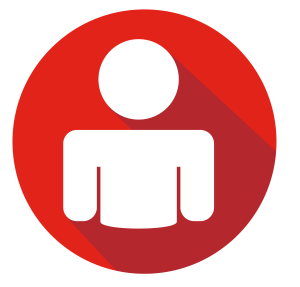Copyright
When individuals create open educational resources, they create educational materials that are intended to be shared broadly with a global audience with minimal restrictions or requirements. Since these educational materials are shared beyond the school’s learning management system and with an audience beyond our registered students, the use of copyright-protected content will often require permission for use. Educational exceptions that allow the use of copyright-protected content in the classroom do not necessarily apply to their use within open educational resources.
Copyright Considerations
Consider the following while you are writing or creating new open educational resources:
- Avoid where possible the use of copyright-protected content in your OER. It is acceptable to refer to and link to the copyright-protected content if it is publicly accessible online but avoid copying or incorporating copyright-protected content in whole or in part within open educational resources. Choose to use content that has already been openly licensed or that is available from within the public domain (public domain content is content that has been previously protected by copyright but that copyright protection has lapsed, expired, or been waived).
- Fair Dealing: If you need to include copyright-protected content within your OER, the possibility to do so may be available within the scope of fair dealing. The fair dealing exception from the Copyright Act does not waive the copyright protections of a work, therefore, materials included under fair dealing need to include a notice that the open license is not applicable to that content. Therefore, you must take care when using fair dealing within open educational resources.
- Permission: If you would like to include copyright-protected content within an open educational resource, but your intended use does not fit within the scope of fair dealing, you will need to obtain permission from the copyright owner before the copyright-protected content is included in an open educational resource. This may also apply to adapting other’s OERs that include copyright-protected content, as their permissions to use the content may not extend to you, especially if the content is included as an exception to the open licence.
What Copyright Law Allows You to Copy
- Your Own Work – Copying and distributing your own work is up to you. Please note, however, that permissions may be nonetheless required if (1) the work contains third-party copyright-protected content, or (2) you’ve transferred your copyright in the work to a third party, as is often the case with published works such as books and articles.
- Insubstantial Portions of Works – Copying quantitatively and qualitatively insubstantial amounts of a work does not require permission or payment for use in the classroom or course site. Examples of insubstantial use in an open educational resource would be referring to a copyright-protected work or linking out to a publicly accessible online site or source. If quoting more than a few sentences at a time, consider whether the amount copied is substantial and obtain the necessary permissions.
- Material in which Copyright Cannot Exist – Copyright does not protect facts and ideas, it only protects an copyright owner’s expression and publication of those facts and ideas. The novel ‘Harry Potter and the Philosopher’s Stone’ is protected by copyright. The idea of a child wizard who confronts an evil wizard is not. Similarly, a textbook on geology may be protected by copyright but the facts in it (about sedimentation, magma, tectonic plates, etc.) are not.
- Material no Longer Protected by Copyright – In Canada, a work’s copyright protection typically ends 70 years after the death of its author, regardless of the citizenship of the author or where the work was originally published. When a work’s copyright protection ends, the work is said to enter into the public domain. See UBC’s Public Domain Guide.
- Openly Licensed Works – material that has been licensed by a Creative Commons license or other open, free-for-use licences can be used with minimal restrictions. Note, it is important to review the terms of the license that has been applied so as to ensure that you comply with those minimal restrictions.
- Government of Canada Works – Government of Canada material may be reproduced for personal or public non-commercial purposes unless there is a specific indication to the contrary attached to the work. Permission is required to reproduce, revise, adapt or translate a work for commercial distribution. Permission is also required to incorporate Government of Canada works and other governments in Canada’s works into open educational resources. Materials produced by other governments around the world are subject to similar rules. It is best to include links to government works within open educational resources rather than incorporating government works into open educational resources.
- Hyperlinks – Providing an Internet link to a work is not generally considered to be the same as making a copy, so it does not trigger the requirement to obtain permission or pay licensing fees.
 You can also reach out to Fanshawe’s Copyright Officer at copyright@fanshawec.ca
You can also reach out to Fanshawe’s Copyright Officer at copyright@fanshawec.ca

